Midnight Sin
Banned: Harassment
Banned User. For details, please contact the Admins.
Inner Sanctum Nobility
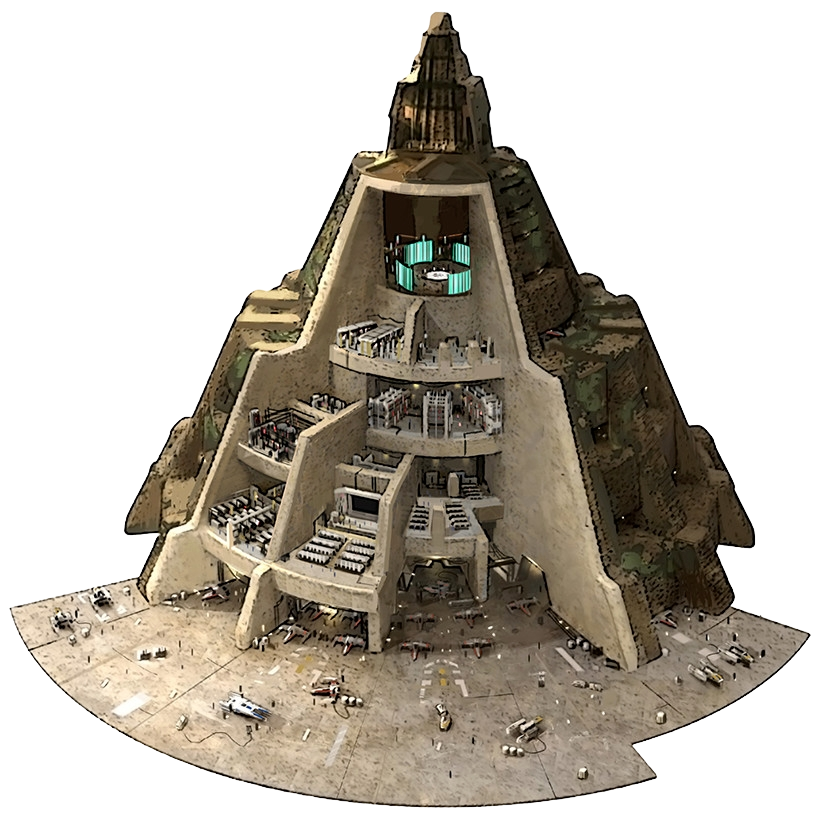
--This will be taking place during the New Republic Era; after the destruction of the second Death Star, Palpatine's demise, and Anakin's redemption. Luke, Anakin's son, and Leia Organa's brother has newly formed the Jedi order; the Temple was built on Yavin 4; a jungle-covered moon orbiting a red gas giant. The moon's landmasses are blanketed with thick rainforests that included purple-barked Massassi trees, grenade fungi, bioluminescent orchids, and climbing ferns. Yavin 4 also has swampy areas and regions still touched by the dark side of the Force from Naga Sadow's presence, though the former sith ghost had bee dispatched by Grandmaster Luke.
--We Wil be starting off as Padawans of the new age under the tutelage of the survivors of the Jedi Purge and Grandmaster Luke. We will develop our abilities, Powers, and lightsaber combat skills. That is until one of us falls to the darkside.
--I will be using things from Legends material, as well as just winging it. I'm a fan, not a loremaster. As a fan, I don't really like how Disney is handling the franchise, or the direction it is going in. So, we won't be including Kylo Ren, Rey, Fin (Phen? Phin? The stormtrooper guy.) or Snoke. Luke is the Grandmaster of this Jedi temple and he is extremely powerful so no trying to kill him, okay? It'll end badly for you.
-- We will be using original characters only, with famous characters being either mentioned, shown briefly or making decisions to move the plot along. They hold no other significance because this is our tale, not theirs. They can have a hand in our missions; making sure we don't get in over our heads, fighting opponents too strong for us, that sort.
--I am looking for people who know the lore (Especially Legends) but are comfortable and flexible enough to allow changes. I want to create a situation wherein, a group of players, maybe two or three and myself, are Padawans to one Jedi Master. We learn to hone our skills, We are of the three Jedi classes Guardian, Sentinel or Consular.
--We each get to learn three saber styles, three abilities, and five force abilities. Most Padawans and Knights develop core skills in all forms except Juyo, as Juyo was deemed too aggressive for Jedi. In this case, however, I will allow the tenets of Juyo to be passed down.
The Seven Traditional Forms were:
Form I (Shii-Cho)
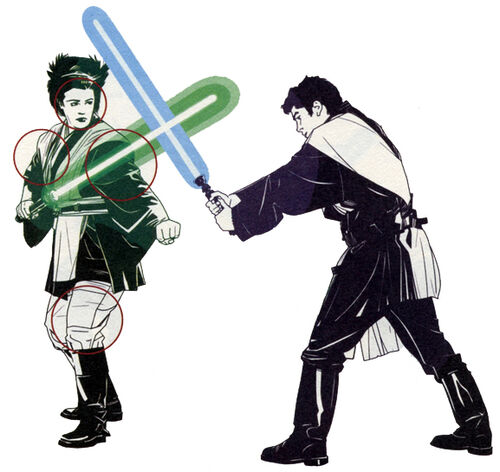
Form I, also known as Shii-Cho, The Way of the Sarlacc, or The Determination Form, was the first of the seven forms of lightsaber combat. This combat form was developed during the transitional period within the Jedi Order from ancient metal swords to more contemporary lightsabers. Shii-Cho was intended to cater to these new weapons, establishing the basic motions and target zones utilized with a lightsaber.
As Shii-Cho was effectively an experimental combat form and was created prior to the emergence of Dark Jedi and Sith Lords, it did not address the issue of lightsaber-to-lightsaber combat and was quickly replaced by Form II. Despite this, Shii-Cho continued to find a niche as a training form, with almost every Jedi duelist receiving some instruction in it, and including elements in their own combat styles. Shii-Cho was considered an effective fall-back option when no other form or combat style would do.
In combat, Form I lightsaber combat was wild and raw, relying on deliberate tactics and being primarily aimed towards disarming rather than injuring foes, in keeping with Jedi philosophy. Basic initiates in the style demonstrated rather clumsy performance, though, in the hands of a master, Shii-Cho was fluid but highly randomized and unpredictable.
As Shii-Cho was effectively an experimental combat form and was created prior to the emergence of Dark Jedi and Sith Lords, it did not address the issue of lightsaber-to-lightsaber combat and was quickly replaced by Form II. Despite this, Shii-Cho continued to find a niche as a training form, with almost every Jedi duelist receiving some instruction in it, and including elements in their own combat styles. Shii-Cho was considered an effective fall-back option when no other form or combat style would do.
In combat, Form I lightsaber combat was wild and raw, relying on deliberate tactics and being primarily aimed towards disarming rather than injuring foes, in keeping with Jedi philosophy. Basic initiates in the style demonstrated rather clumsy performance, though, in the hands of a master, Shii-Cho was fluid but highly randomized and unpredictable.
Form II (Makashi)
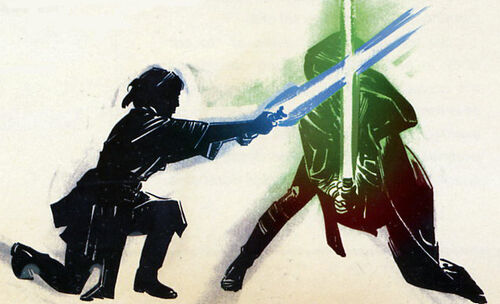
Form II, also known as Makashi, The Way of the Ysalamiri, or The Contention Form, was the second of the seven classic forms of lightsaber combat. Developed for the purpose of lightsaber-to-lightsaber combat, to address the failings of Form I, Makashi was the most dueling-centric of the seven classical forms. Relying on precision and efficiency over Shii-Cho's wild, sweeping motions, Form II allowed an initiate to defend themselves against an opponent with minimal effort while placing a heavy focus on avoiding disarmament.
Makashi was described as elegant and focused, and was based on balance and footwork to outmaneuver opponents. Fluidity, precision, and economy of motion were relied on, rather than strength, with Form II bladework heavily utilizing jabs and light cuts rather than hack and slash movements. Overall, the form was at its fore when engaged in combat against a single enemy duelist. However, after the Hundred-Year Darkness saw the destruction of most of the galaxy's Dark Jedi, the chances of a Jedi encountering a lightsaber-wielding opponent began to decrease drastically. In the intervening years, the Great Hyperspace War and the Old Sith Wars began and ended in fits and starts, which caused the appearance of Dark Jedi and Sith to take on a sporadic pattern.
This, combined with the increasing availability of blaster technology, resulted in Jedi encountering ever-increasing numbers of blaster wielding opponents, but only rarely encountering enemy duelists. As Makashi had been designed strictly for blade-to-blade combat, it lacked an effective means of combating enemies with projectile weapons. Due to this oversight, Makashi lost a great deal of its practical applicability, and over time it faded into relative obsolescence. It would eventually be supplanted by Form III, which was both the most defensive of the seven forms and designed specifically for blast-deflection. However, the style would see a return to prominence during the New Sith Wars, a thousand years of off and on warfare which saw the rise and fall of numerous Sith organizations. After the Battle of Ruusan concluded these wars, the style once again faded from popular use and never regained any widespread practice amongst the Jedi.
Makashi was described as elegant and focused, and was based on balance and footwork to outmaneuver opponents. Fluidity, precision, and economy of motion were relied on, rather than strength, with Form II bladework heavily utilizing jabs and light cuts rather than hack and slash movements. Overall, the form was at its fore when engaged in combat against a single enemy duelist. However, after the Hundred-Year Darkness saw the destruction of most of the galaxy's Dark Jedi, the chances of a Jedi encountering a lightsaber-wielding opponent began to decrease drastically. In the intervening years, the Great Hyperspace War and the Old Sith Wars began and ended in fits and starts, which caused the appearance of Dark Jedi and Sith to take on a sporadic pattern.
This, combined with the increasing availability of blaster technology, resulted in Jedi encountering ever-increasing numbers of blaster wielding opponents, but only rarely encountering enemy duelists. As Makashi had been designed strictly for blade-to-blade combat, it lacked an effective means of combating enemies with projectile weapons. Due to this oversight, Makashi lost a great deal of its practical applicability, and over time it faded into relative obsolescence. It would eventually be supplanted by Form III, which was both the most defensive of the seven forms and designed specifically for blast-deflection. However, the style would see a return to prominence during the New Sith Wars, a thousand years of off and on warfare which saw the rise and fall of numerous Sith organizations. After the Battle of Ruusan concluded these wars, the style once again faded from popular use and never regained any widespread practice amongst the Jedi.
Form III (Soresu)
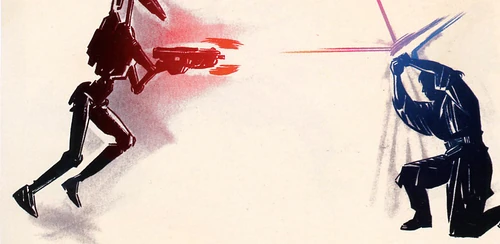
Form III, also known as Soresu, the Way of the Mynock, or the Resilience Form, was the third of the seven classic forms of lightsaber combat that was recognized by the Jedi Council prior to and during the Clone Wars. Soresu was developed during the widespread emergence of blasters as an offensive weapon. Essentially a development on Form I blast-deflect training, Soresu relied on tight bladework and subtle dodges to provide maximum defensive coverage, minimizing exposure to ranged weaponry. Over time, Soresu transcended this basic origin and came to be considered the ultimate expression of non-aggressive Jedi philosophy.
Like Makashi, Soresu relied on an economy of motion and energy efficiency, keeping up constant blade movement to build up momentum and minimize energy expenditure. Form III focused on strong defensive technique to essentially outlast an opponent, waiting until he/she began making mistakes due to frustration or fatigue, before taking advantage of these lapses and countering. Despite its effectiveness, Soresu was heavily criticized for its lack of offensive capabilities, as it facilitated survival rather than victory. As an answer to these weaknesses, the highly aggressive Ataru and Shien forms were developed side by side.
Like Makashi, Soresu relied on an economy of motion and energy efficiency, keeping up constant blade movement to build up momentum and minimize energy expenditure. Form III focused on strong defensive technique to essentially outlast an opponent, waiting until he/she began making mistakes due to frustration or fatigue, before taking advantage of these lapses and countering. Despite its effectiveness, Soresu was heavily criticized for its lack of offensive capabilities, as it facilitated survival rather than victory. As an answer to these weaknesses, the highly aggressive Ataru and Shien forms were developed side by side.
Form IV (Ataru)
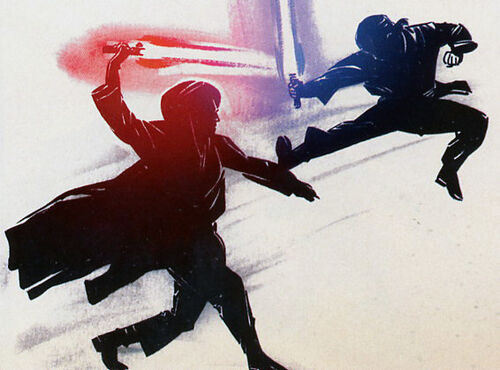
Form IV, also known as Ataru, the Way of the Hawk-Bat, or The Aggression Form, was the fourth of the seven forms of lightsaber combat. The history of Ataru stretched back through the Old Republic, to at least as early as the Mandalorian Wars, where it was commonly employed by Jedi of that day. Ataru continued to be a common form among the Jedi in the latter stages of the Republic and was also known to be employed by the Sith.
An aggressive style, Form IV was fast-paced and effective against single opponents, though weaker in prolonged combat and confined spaces. Also, it was not recommended for use against opponents wielding blasters. Ataru was characterized by Force-assisted acrobatics, such as somersaults and leaping strikes, both for attack and defense. Another characteristic of the form was its fast, powerful strikes from multiple directions. Notable users of this combat form during the Old Republic included Yoda and Qui-Gon Jinn. The New Jedi Order preserved the knowledge of Ataru, and Jedi Masters such as Luke Skywalker, Mara Jade Skywalker, and Kyle Katarn all employed it.
An aggressive style, Form IV was fast-paced and effective against single opponents, though weaker in prolonged combat and confined spaces. Also, it was not recommended for use against opponents wielding blasters. Ataru was characterized by Force-assisted acrobatics, such as somersaults and leaping strikes, both for attack and defense. Another characteristic of the form was its fast, powerful strikes from multiple directions. Notable users of this combat form during the Old Republic included Yoda and Qui-Gon Jinn. The New Jedi Order preserved the knowledge of Ataru, and Jedi Masters such as Luke Skywalker, Mara Jade Skywalker, and Kyle Katarn all employed it.
Form V (Shien / Djem So)
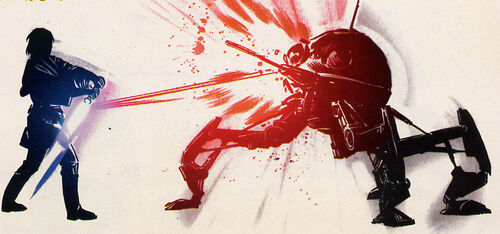
Form V, also known by its two primary disciplines of Shien and Djem So, as well as The Way of the Krayt Dragon or The Perseverance Form, was the fifth of seven forms recognized as canon by the last Jedi Council for lightsaber combat. It was developed by practitioners of Form III who felt that the defensively minded form unnecessarily extended time spent in combat by forcing its users to wait for an opportunity to strike rather than create their own openings. Form V combat was characterized by power attacks and defense immediately followed by a counterstrike.
Shien, considered the classical variant of Form V, was more adept at blocking blaster bolts than for blade-to-blade combat, whereas Djem So was developed later and was specifically intended for use in lightsaber combat. Both Shien and Djem So were designed to use an opponent's attack against them, as evidenced by Shien's focus on returning blaster bolts to their origin and Djem So's emphasis on immediate counterattacks. Although some Jedi felt that Form V encouraged aggression and domination, that sentiment did not stop many Jedi from practicing the form.
Shien, considered the classical variant of Form V, was more adept at blocking blaster bolts than for blade-to-blade combat, whereas Djem So was developed later and was specifically intended for use in lightsaber combat. Both Shien and Djem So were designed to use an opponent's attack against them, as evidenced by Shien's focus on returning blaster bolts to their origin and Djem So's emphasis on immediate counterattacks. Although some Jedi felt that Form V encouraged aggression and domination, that sentiment did not stop many Jedi from practicing the form.
Form VI (Niman)
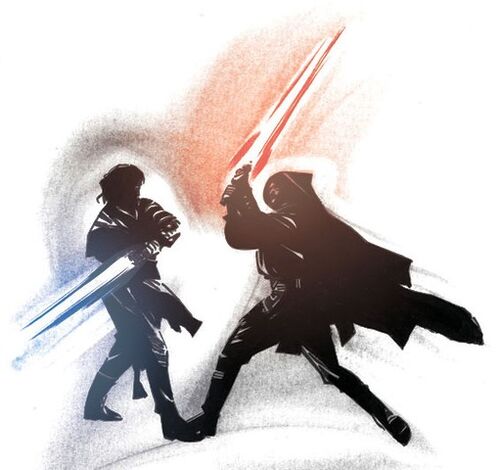
Form VI, also known as Niman, the Way of the Rancor, the Moderation Form, and the diplomat's form, was the sixth form of the seven forms of lightsaber combat. This fighting style was a hybrid martial art created by effectively combining elements of the preceding lightsaber forms into a single, generalized form. Niman balanced out between the various specializations of the other forms, covering many of the basic moves, but focusing on overall moderation. This resulted in a fighting style that lacked a significant advantage, but also lacking any serious drawbacks, and thereby not leaving adherents as exposed as some of the more aggressive or specialized forms. Overall, Niman had a fairly relaxed focus on bladework, designed as a simple, easily mastered fighting form for Jedi who preferred to devote most of their time to study and diplomacy. Despite this, it could be absolutely deadly in the hands of a skilled practitioner, as demonstrated by such notables as Exar Kun.
To compensate for the relaxed focus on bladework and lack of significant specialization, Niman training regimens encouraged the inclusion of Force-based attacks in combat, such as telekinetic pulls and shoves used in sync with lightsaber strikes. Also, as Niman was developed from two pre-existing martial arts fighting forms that both emphasized the use of dual-blades, it provided a firm foundation for duelists looking to study into such practices. Ultimately, Niman's success in combat was dependent on a practitioner's intuition and creativity in combat, rather than the rote responses common to the other forms.
To compensate for the relaxed focus on bladework and lack of significant specialization, Niman training regimens encouraged the inclusion of Force-based attacks in combat, such as telekinetic pulls and shoves used in sync with lightsaber strikes. Also, as Niman was developed from two pre-existing martial arts fighting forms that both emphasized the use of dual-blades, it provided a firm foundation for duelists looking to study into such practices. Ultimately, Niman's success in combat was dependent on a practitioner's intuition and creativity in combat, rather than the rote responses common to the other forms.
Form VII (Juyo)
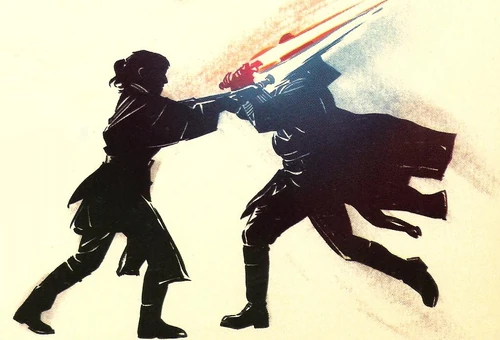
Form VII, also known as Juyo, the Way of the Vornskr, or the Ferocity Form, was the seventh of seven forms recognized as canon for lightsaber combat by the last Jedi Council of the Old Jedi Order. In use, millennia prior to the Battle of Yavin, the Juyo incarnation of Form VII was described as the most vicious form of lightsaber combat and was said to involve a significant internal focus on the part of the user. Juyo had many practitioners throughout the years, including Jedi Masters Kavar, Zez-Kai Ell, and Vrook Lamar. As time passed, knowledge of Form VII became restricted among the Jedi Order, whose members were worried that its precepts would lead practitioners toward the dark side. In contrast, members of the Sith, such as Darth Maul, employed Juyo without reservation, as did Dark Jedi such as Galen Marek.
There were two variations of Form VII, Juyo, and Vaapad, but both utilized bold, direct movements. According to accounts compiled by the New Jedi Order, use of Form VII was more demanding in terms of energy used due to a broader focus and deeper utilization of emotion. A Form VII practitioner was said to maintain a calm exterior appearance, but they were also stated to experience significant internal pressure while using the Ferocity Form. In addition, it was described as sometimes paradoxical and unpredictable, as well as filled with concepts that made the form too difficult and unattractive to many students.[/spoilers]
There were two variations of Form VII, Juyo, and Vaapad, but both utilized bold, direct movements. According to accounts compiled by the New Jedi Order, use of Form VII was more demanding in terms of energy used due to a broader focus and deeper utilization of emotion. A Form VII practitioner was said to maintain a calm exterior appearance, but they were also stated to experience significant internal pressure while using the Ferocity Form. In addition, it was described as sometimes paradoxical and unpredictable, as well as filled with concepts that made the form too difficult and unattractive to many students.[/spoilers]
Last edited:

